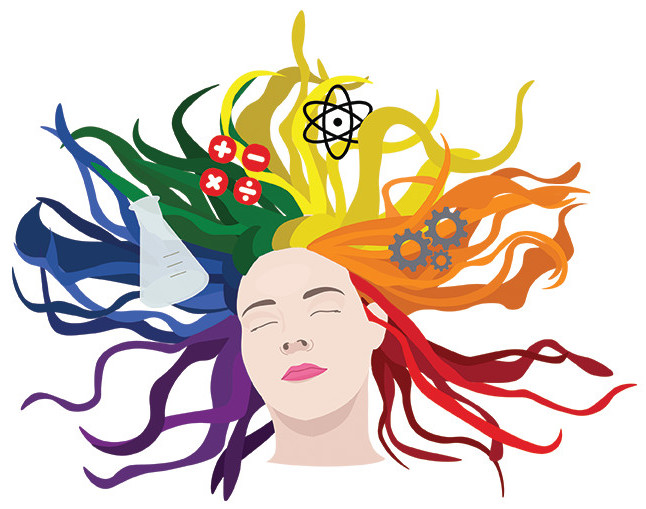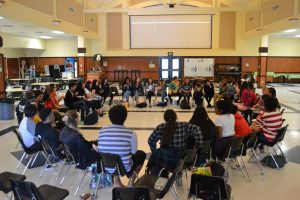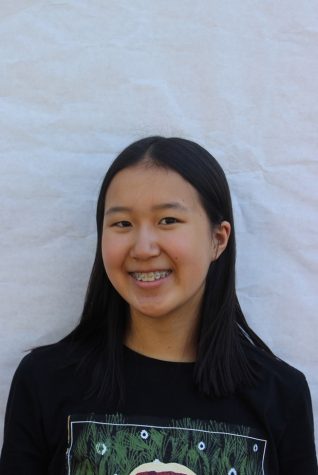Queering a path in STEM
Cultivating a safe environment for LGBTQ+ people pursuing STEM is necessary to encourage visibility and break stereotypes.
October 9, 2018
My biggest problem when deciding what I want to do in the future is narrowing down a wide range of interesting options between STEM and humanities. The decision was based on where I felt most comfortable, or to put it bluntly: which was more gay-friendly.
Based on that criteria, it took me less than a second to decide on humanities, and I began to apply to colleges accordingly. Soon, however, I started second-guessing my own judgement. What made me believe that STEM was not LGBT+ friendly? The problem that immediately came to mind was visibility. The LGBT+ community tends to gravitate to fields that they feel respected in to find a sense of community that they lacked throughout most of their lives. But that prompted further questions: Why is there little LGBT+ representation in STEM? Why is that representation important?
A survey of 340,000 individuals conducted by Gallup found that 4.5 percent of U.S. citizens identify as part of the LGBT community. Furthermore, when Bryce Hughes, an assistant professor at Montana State University, analyzed the retention rate of LGBT+ versus non-LGBT+ individuals across 78 higher education institutions in the STEM field, he found that the retention rate among non-LGBT individuals was eight percent higher than that of LGBT individuals. However, the sample of queer students was limited due to the few queer individuals pursuing STEM.
Mrs. Annie Nguyen, an AP Environmental Science teacher, majored in biological science with an emphasis in ecology, behavior and evolution. “I think with STEM, it is a little tricky because there are so many different populations that are in STEM, and across the last twenty years the focus on who we’re trying to assist and recruit in the STEM field changes depending on what the big social issues were. Not saying those people aren’t in the field but it’s about a) visibility or b) a situation where they feel comfortable outing themselves and being in the public eye in that aspect,” Nguyen said.
Both Nguyen and the lack of statistics prove that there is a clear discrepancy of visible queer people in STEM fields, which is attributed to the lack of individuals comfortable with coming into the public eye. If people are not comfortable coming out, potential queer STEM pursuants will be discouraged by the lack of visibility. It’s a real catch-22 that results in a lack of representation.
Nguyen described an environment that attracts queer scientists: this previous summer she worked at a lab under Dr. Jay Keasling, an out gay scientist most notable for his work on malaria medicine. Several scientists at the lab are also gay.
“When the lab started 20 years ago, it kind of turned into a lab where there were a lot of scientists who also happened to be gay, because they knew who was in charge of the lab and that they’ll be safe,” Nguyen continued.
For the scientists working with Dr. Keasling, the pressure of having to conform to societal norms or hide one’s identity seemed to have been alleviated by the presence of similar people. There was a sense of harmony because they could focus on their passion for science rather than their relationships and judgement within the workplace.
It seems there is a path to more active representation in STEM fields: cultivating “homespaces” for queer people. Homespaces are safe places or communities where particular groups of people feel comfortable with their identity. Though comfort is subjective, when a person is not safe in an environment, it relinquishes its title as a supportive community.
Unfortunately, members of the LGBT+ community are often unable to find homespaces in many everyday settings. Educational institutions and workplaces are notable for their non-discriminatory efforts, but that behavior seems to be underdeveloped for queer people. According to the Williams Institute on Sexual Orientation Law and Policy, 15 to 43 percent of gay and transgender people have experienced some form of discrimination at work.
Workplace discrimination often discourages LGBT+ people from pursuing STEM because queer people are strongly affected by their environment. Humanities have cultivated places that are more accepting of differences because those very differences influence the field. Race and gender discussions are integral to politics, but science and math does not always involve those discussions.
Despite that, studies have proven that innovation and problem-solving is capable through diversity. The Harvard Business Review conducted 40 case studies associating acquired diversity and overall growth. Companies that were more diverse in terms of gender, race, and sexuality were 45 percent likelier to report that their firm’s market share grew and 70 percent likelier to report that they captured a new market. Having the same type of people solve a problem doesn’t promote critical thinking, instead it promotes a linear vision of progression. Therefore, by promoting acceptance of LGBT+ people, and consequently diversity, we can facilitate advanced thought and creativity in STEM.
Although queer people have not traditionally pursued STEM fields, this can be changed. It’s the relationship between LGBT+ students and STEM is so convoluted it starts with how STEM, a seemingly objective field, can be so heteronormative?
How do social norms permeate to a field that is open to everyone equally? To fully understand this, we need to study movements by previously marginalized groups in STEM. In the past, women were discouraged from pursuing science. Recently, however, women in STEM have been making strides in terms of being represented. Though the sciences are still predominantly male skewed, the gap is closing.
Wanzhu Zheng, a junior at Dougherty, is also deciding whether or not to pursue STEM in the future. She agrees that there is a significant gap between males and females in STEM, the reasoning has to due with social nurturing. (Though Zheng considers herself an ally, she is not part of the LGBT community).
“It is about how people view women in social standings, traditionally men are perceived as breadwinners for the family so they go for STEM jobs since it seems to be more stable, successful, and high paying and especially women are more prone to go for pink-collared jobs since that what society is considered a normal,” Zheng explained.
Women in STEM is a great example of recent progression in diversity efforts. Though the change is slow, opinions of the issue has been drastically positive. And the same can be done in the LGBT+ community.
Time is important when talking about inclusivity, since opinions on gay marriage drastically changed over the past decade. The amount of queer people in STEM will increase as people gradually become more comfortable socially to come out, but that’s contingent on breaking the vicious cycle of lack of LGBT+ visibility in STEM.
However, time alone isn’t enough. The heteronormative culture in STEM won’t change unless we cultivate a safe environment for members of the LGBT+ community. This is important because denying equal opportunity to queer groups ultimately limits future innovation.
While I have a lot of respect for the humanities, ultimately my passion lies in STEM, and I am not willing to compromise it for this forbidding cycle.




